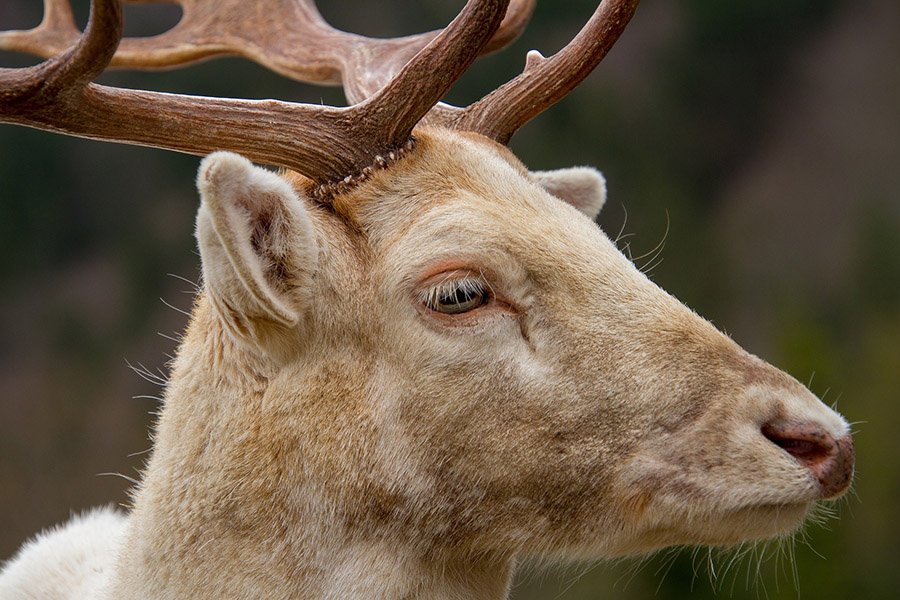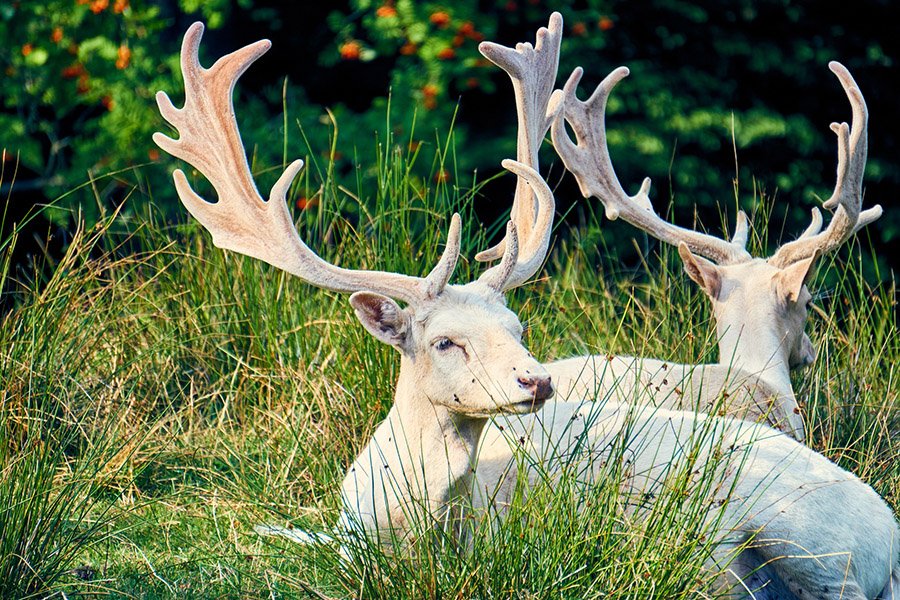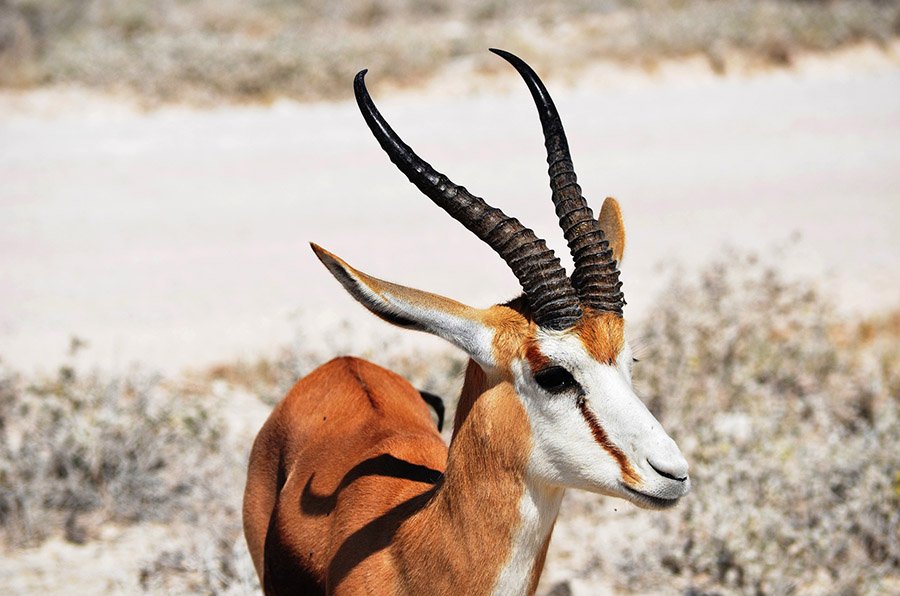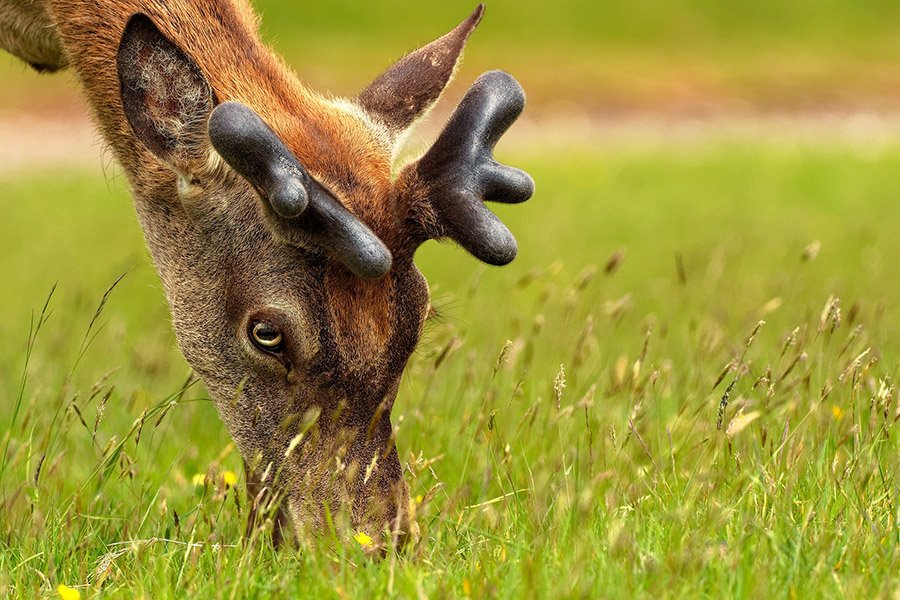Deer are majestic mammals that have captured the hearts of nature enthusiasts for centuries. One of the most remarkable features of these animals is their antlers. Fortunately, this article will explore the anatomy of antlers, their growth process, and how they differ from horns.
What Are Deer Antlers Made of?
Deer antlers are made of bone and grow from specialized cells known as antlerogenic cells located in the pedicle of a deer’s skull. The pedicle is a bony structure that serves as the base from which the antlers grow.
The structures also comprise a matrix of bone, cartilage, and connective tissue covered in velvet-like skin. They are unique in their shape and size, with different species of deer exhibiting various antler shapes and sizes.
This diversity results from different selective pressures in different environments and genetic and environmental factors that influence antler growth.
Parts of a Deer Antler
Deer antlers have several parts that collectively create a unique structure. Here are the main components:
1. Pedicle
This is the base of the antler, which is attached to the skull of the deer. It is where the antlerogenic cells are located, which are responsible for the growth and development of the antler.

2. Beam
It is the antler’s main shaft or branch that grows out from the pedicle. The beam can have additional units, known as tines, which can vary in number and shape depending on the species and age of the deer.
3. Brow Tine
It’s the first branch or point that grows off the main beam of the antler, located closest to the deer’s face.
4. G1, G2, G3
These points or tines grow off the antler’s main beam, with the “G” referring to “generation.” The number after the “G” indicates the order in which the tines grew.
5. Burr
It’s the rough, knobby area at the antler’s base, where it attaches to the pedicle.
6. Velvet
This soft, hairy covering grows over the antler during the growth phase. The velvet is rich in blood vessels and nerves that nourish and protect the growing antler.
7. Antler Tip
It’s the pointed/rounded end of the antler, depending on the species of deer.
Are There Different Types of Antlers?
There are different types of antlers, which vary in size, shape, and structure depending on the species of deer. Here are some of the most common types of antlers:
Palmate Antlers
These antlers have a broad, flattened shape, with tines resembling a hand’s fingers. Palmate antlers are found in moose, elk, and caribou species.

Tines Antlers
They have multiple points or tines that grow off the main beam. These structures can have a variety of shapes and sizes and are found in species such as white-tailed deer and mule deer.
Spike Antlers
They have a simple, straight shape with only one point, or “spike.” Spike antlers are found in younger deer and some species, such as the Sitka black-tailed deer.
Fused Antlers
In some species, such as pronghorn and musk deer, the two sides of the antlers fuse to form a single structure (fused antlers) with no visible branches or tines.
Non-typical Antlers
These antlers do not conform to a particular species’ typical shape or pattern. They can have unusual tines or points, asymmetrical growth, or other abnormalities.
Difference Between Horns and Antlers
Below are five key differences between horns and antlers:
- Composition: Horns are made of keratin, the same material as our hair and nails, while antlers are made of bone.
- Growth: Horns are permanent structures that continue to grow throughout the animal’s life, while antlers are shed and regrown each year.
- Appearance: Horns have a smooth, curved appearance, while antlers have a branching, textured structure with tines or points.
- Gender: Males and females can have horns in most species, but antlers are typically found only in males.
- Purpose: Horns are often used for defense, digging, or attracting mates, while antlers are primarily used for sexual selection and male competition.

Do Deer Have Feelings in Their Antlers?
Deer do not have feelings in their antlers. These structures are made of bone and are not connected with nerves, so they cannot feel pain, pleasure, or other sensations.
Are Antlers and Horns Hollow?
Although deer antlers typically have significant space, they are not considered entirely hollow, unlike some animals with completely hollow horns.
The empty core of the antler is called the medullary cavity, and it is lined with a thin layer of bone tissue called the endosteum.
On the other hand, the horns of antelopes, such as impalas and gazelles, are primarily hollow. This space helps to reduce the horn’s weight, making it easier for the animal to use them for defense or mating purposes.
Additionally, the hollow space also helps to amplify sounds, making the animal’s calls and vocalizations louder and more effective.
What Is velvet On Deer’s Antlers?
Velvet is a soft, furry layer of skin that covers the growing antler during the early stages of development. It is composed of a network of blood vessels and nerves that provide nourishment and sensitivity to the antler as it grows.
Where Does The Velvet Come From?
The velvet on a deer’s antlers comes from the skin or dermis layer of the antlers. During the growth phase of the antlers, the deer’s body produces this velvet that covers the antlers.

Frequently Asked Questions
Are Deer Antlers Soft?
Deer antlers are soft during the velvet stage, which is the period when the antlers are actively growing and covered in a layer of velvet skin. During this time, the antlers are covered in a soft, fuzzy material that feels soft.
What Are Deer Antlers For?
Deer antlers serve several purposes, such as:
- Attracting Mates: Male deer use their antlers to attract female deer during mating season. The antlers’ size, shape, and symmetry can indicate the male deer’s health and genetic quality, making them more attractive to females.
- Establishing Dominance: During the mating season, male deer use their antlers to engage in ritualized combat with other males to determine the stronger one.
- Defense: Deers occasionally try to fight some of their predators by using their antlers to strike or stab them.
Do Deer Have Nerves in Their Antlers?
No, adult deer antlers don’t have nerves in their antlers since they are made up of dead cells that end up forming these bone-like structures.
However, it’s vital to note that fawns have nerves running through their developing antler’s velvet layer, which makes them very sensitive. It explains why they rub their antlers on trees during this time. This act helps them remove the velvet, which is itchy and uncomfortable for the deer as the antlers grow.
When Do Deer Regrow Their Antlers?
Deer regrow their antlers every year, typically starting in the spring and completing the process by late summer. However, the exact timing of antler growth can vary depending on the species of deer and other factors such as the animal’s age, health, and nutritional status.
Generally, antler growth is triggered by changes in hormone levels that occur in response to changing day length. As the days get longer in the spring, the deer’s body produces higher testosterone levels, stimulating new antlers’ growth.
Do Male Deer Always Have Antlers?
Most male deer species have antlers that grow and shed annually. However, not all male deer have them, such as the Chinese water deer and the musk deer. Instead, they have long canine teeth that they use for display and defense.
Do Deer Have Horns or Antlers?
Deer have antlers, not horns. While both structures are bony growths that protrude from the head of an animal, there are several key differences between the two.
Antlers are shed, regrown, and covered in a layer of velvet skin while growing. They are also branched and are mainly found only on male deer, although they may also develop in females.
On the other hand, horns are permanent bony structures that are not shed and are covered in a hard keratin sheath. They are usually not branched and are found in both males and females of the species.
Do Moose Have Horns Or Antlers?
Moose have antlers, not horns. Like other members of the Cervidae family, moose grow and shed their antlers annually and are covered in velvet while they develop.
These antlers are typically more extensive and more massive than those of other deer species, and they are usually flattened and palmate, with a broad, flattened shape that resembles a hand.
What Are The Horns of a Giraffe Called?
The horns of a giraffe are called ossicones. These bony protrusions grow from the giraffe’s skull and are covered with skin and fur but are not shed like antlers and horns.
Final Thoughts
While antlers and horns look similar, they are two distinct types of bony growths that serve different purposes and are found in various animals.
Therefore, understanding the differences between these two types of appendages can help us appreciate the unique adaptations that have evolved in different mammal species.

